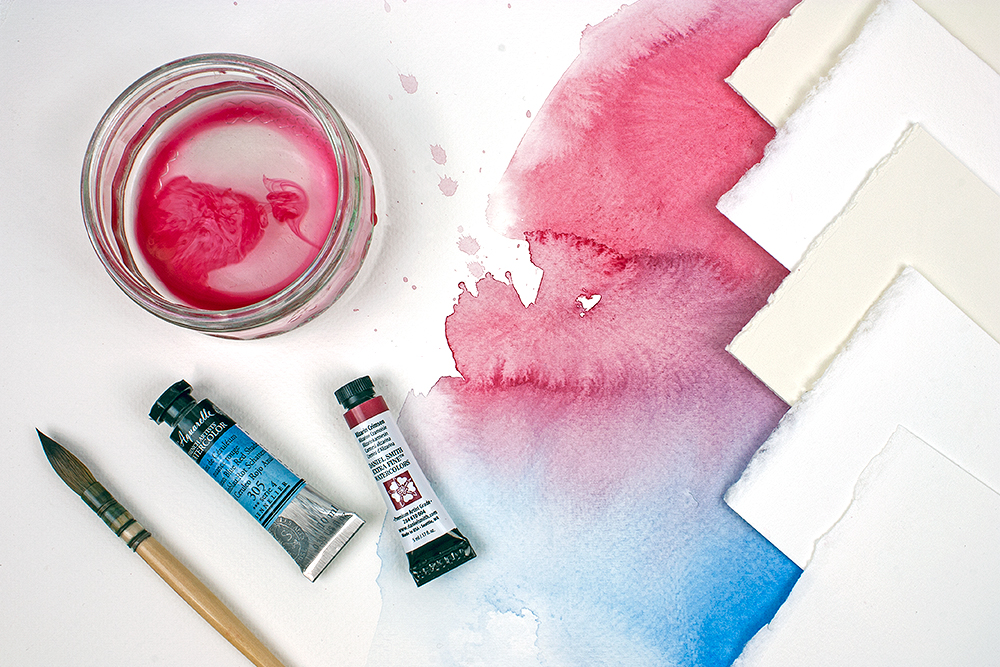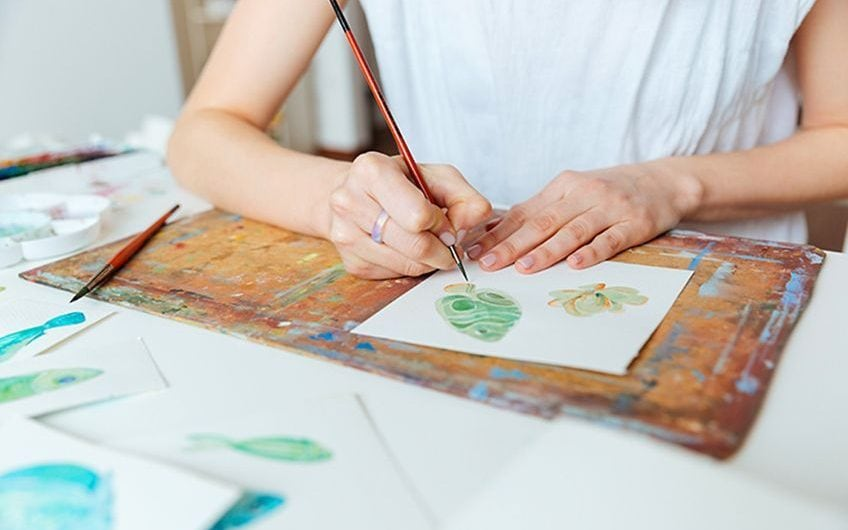In the world of watercolor painting, the canvas is just as crucial as the artist's brush. One cannot emphasize enough the significance of watercolor paper in achieving exceptional artworks.
This article dives deep into the realm of watercolor paper, examining various types, textures, and features that make it the perfect canvas for different techniques and styles of painting.

Understanding Watercolor Paper
Watercolor paper, also known as watercolour paper, is specially crafted to absorb water and pigments while maintaining its structural integrity. It provides a stable surface that allows artists to layer, blend, and lift colors with ease.
Unlike regular paper, watercolor paper is engineered to withstand the demands of wet-on-wet and wet-on-dry techniques without warping or deteriorating.
Different Types of Watercolour Paper

Watercolor paper comes in various types, such as cold press, hot press, and rough, each with its unique properties. The most commonly used type is cold press, featuring a slightly textured surface that strikes a balance between absorbency and control.
Hot press paper, in contrast to cold press, boasts a smooth surface, making it ideal for detailed work and creating fine lines. Rough watercolor paper, with its heavily textured surface, adds an expressive and organic quality to artworks.
Exploring Texture and Surface Variations
Watercolor paper offers a range of textures and surface variations, including fine, medium, and rough grain. The choice of texture significantly influences the desired effect and technique an artist wishes to employ in their painting.
While smoother textures are perfect for precise details and intricate brushwork, rougher textures add depth and visual interest to the artwork.
The Importance of Quality
The quality of watercolour paper is of utmost importance in achieving impressive results in your artwork. Subpar papers may buckle under heavy washes or repeated layering, compromising the final outcome.
To ensure longevity, it is essential to look for acid-free watercolor paper made from archival materials.
Understanding Paper Weight
Watercolor paper comes in various weights, typically measured in pounds or grams per square meter (GSM). The weight of the paper directly affects its thickness, durability, and capacity to handle water and pigments.
Lighter weight papers, such as 90 lb (190 GSM), are suitable for sketching and experimentation, while heavier papers, such as 300 lb (640 GSM), are better suited for professional work and heavy washes.
Types of Watercolor Paper Sheets
Watercolour paper sheets are available individually or in blocks. Individual sheets offer the flexibility to work on various sizes and allow for easy framing or mounting.
Watercolor blocks, consisting of multiple sheets bound on all four sides, prevent paper from buckling when wet. This makes watercolor blocks convenient for consistent work without the need for stretching or taping.
Exploring Different Brands
Several reputable brands produce high-quality watercolor paper. One such esteemed brand is Saunders Waterford. Watercolour paper from Saunders Waterford is widely recognized for its exceptional quality and durability.
Other renowned brands, such as Arches, Fabriano, and Strathmore, also offer a wide selection of watercolor papers with varying textures, weights, and sizes to cater to diverse artistic preferences.
Of course, a dedicated artist will also need high quality watercolor paint. Eco-conscious artists can buy a watercolor paint kit online at Natural Earth Paint Canada. These paints are high grade, non-toxic, and made from all natural ingredients.
Watercolor Paper for Other Artistic Mediums
Although primarily used for watercolor painting, watercolor paper is also suitable for other artistic mediums like gouache and printmaking. Its absorbent nature allows for rich color saturation and precise details, making it a versatile choice for artists exploring different mediums.
Choosing the Best Paper for Your Techniques

The choice of watercolor paper depends on the techniques an artist intends to employ. For artists who prefer creating detailed and intricate paintings, hot pressed paper with its smooth surface is the ideal choice.
Conversely, cold press or rough watercolor paper is better suited than hot press for loose and expressive styles, adding texture and visual interest to the artwork. Experimenting with different papers such as hot press, cold press, and rough watercolour paper helps artists find the perfect match for their preferred techniques and art supplies.
Exploring Watercolor Paper Pads
Watercolour paper pads offer a convenient option for artists working on smaller pieces or while on the go. These pads contain a stack of pre-cut sheets bound together on one side, allowing for easy tearing when a painting is complete.
Available in various sizes, textures, and weights, watercolor paper pads provide a portable and accessible solution for artists.
Watercolor Paper for Sketchbooks
Watercolor sketchbooks, featuring specially designed paper suitable for watercolor painting, are perfect for artists who enjoy keeping a dedicated sketchbook. These sketchbooks come in different sizes and contain heavyweight paper capable of handling light washes and experimentation.
Having a watercolor sketchbook allows artists to capture ideas, practice techniques, and create quick studies wherever inspiration strikes.
Absorbency and Wet Techniques
One of the key features of watercolour paper is its absorbency. A major factor that impacts absorbency is the type and quality of the wood pulp and cellulose fibers that are used in paper production. The paper's ability to hold water and pigments allows for beautiful washes and seamless color transitions.
Different papers exhibit varying levels of absorbency, enabling artists to achieve diverse effects. Some papers are more absorbent, perfect for creating soft, delicate washes, while others are less absorbent, facilitating easier lifting and scrubbing techniques.
Exploring Additional Features
Watercolor paper may offer additional features that enhance the painting experience. Some papers feature a coating or clay surface, providing a smoother working surface and preventing pigments from sinking too deeply.
Others may have deckled edges, adding elegance to the finished artwork. Considering these additional features helps artists find the perfect paper for their specific needs.
Using Watercolor Paper Boards and Panels
Watercolor paper boards and panels provide a sturdy and rigid surface for painting. These boards consist of watercolor paper mounted onto a rigid backing, such as wood or Masonite.
They offer the convenience of a ready-to-use surface without the need for stretching or framing. Watercolor boards and panels are particularly useful for plein air painting or when working on large-scale artworks.
Finding the Ideal Watercolour Paper
With the wide selection of watercolor papers available, finding the ideal one for your artistic endeavors may require some experimentation. Consider your preferred texture, weight, and working techniques when choosing watercolor paper.
By exploring different textures, brands, and features, artists can discover the paper that complements their artistic style and brings their creative visions to life.
Conclusion
Watercolor paper serves as a vital tool for every watercolor artist, providing a surface that allows colors to bloom and techniques to flourish. Understanding the various types, textures, and features of watercolor paper empowers artists to make informed choices in their artistic pursuits.
By investing in high-quality watercolor paper and paint, artists elevate their creations, ensuring the longevity and impact of their finished work.


 naturalearthpaint.ca
naturalearthpaint.ca